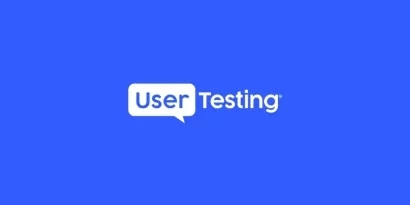
Episode 181 | July 28, 2025
UX for startups: MVP tips and common design mistakes
UX expert Oksana Kovalchuk shares startup UX mistakes, MVP tips, and how to design products users actually want—not just what founders imagine.
Why most startup products fail — and how better UX can save them
Building a startup is a rush of ambition, optimism, and sleepless nights. But for all the energy poured into prototypes and pitch decks, many early-stage products still crash and burn—not because the idea was bad, but because the user experience was.
That’s the warning and wisdom from Oksana Kovalchuk, CEO and co-founder of the design-driven development agency Anoda, in a recent episode of Insights Unlocked. With 20 years of experience in UX for startups, Oksana has seen it all—and she doesn’t sugarcoat the truth.
“You will always have more ideas than money,” she said. “Choose wisely.”
Startups often chase perfection or personal vision over practical, usable design. But successful products aren't built for founders—they’re built for users. And designing with that mindset can mean the difference between explosive growth and expensive silence.
Let’s break down some of the most valuable lessons Oksana shared about UX, MVPs, and the power of real feedback.
Founders aren’t users—and that’s a problem
One of the most common and costly startup UX mistakes is when founders design their product for themselves. This isn't just a philosophical misstep—it’s a functional one.
“They’re building it for themselves,” Oksana explained. “They’re not thinking about target audience or anything else.”
She recalled one client—a middle-aged man—who wanted to build an AI beauty app targeted at women. Everything about his design choices was rooted in logic and structure, not emotional cues or aesthetic preferences that might resonate with women. Her job, she said, was to stop him from “burning it to the ground” by helping him refocus on actual users.
Founders must step outside their own experiences and biases. You are not your user. Your friends are not your user. If you skip this reality check, you're likely to end up with a product that nobody wants, no matter how beautifully it's coded.
GUIDE
The startup's guide to user feedback
MVP doesn't mean “cheap.” It means smart.
For many founders, building a minimum viable product (MVP) is where UX starts to break. Oksana sees startup teams trying to squeeze every bell and whistle into their first release—without realizing that every new feature adds complexity, cost, and risk.
“Adding one single button or menu item will affect dozens of screens,” she noted. “Complexity adds up fast.”
Her advice? Cut ruthlessly. Focus on the core functionality that will demonstrate your product’s value and allow you to test assumptions. She tells founders:
- Don’t waste money on $10,000 logos or brand books.
- Don’t reinvent the wheel—use existing design systems like Material UI or Tailwind.
- Don’t aim for perfection. Even popular apps have bugs. Focus on function and feedback.
“Fail fast, move fast,” she said. “Grab the feedback, do something with it, iterate.”
Want feedback? Listen to your competitors' users
User testing isn’t just a phase—it’s a mindset. But for resource-strapped startups, formal usability tests aren’t always possible right away. That doesn’t mean you can’t learn from users.
Oksana suggests mining competitor reviews as a goldmine of insight.
“Check your competitors. See what users say about them. What do they love? What do they hate? Steal this feedback.”
She recommends reading App Store reviews, product forums, and Reddit threads to understand what features users value and what frustrates them. This intel can shape your own product roadmap—and help you avoid repeating known mistakes.
Still, not all feedback is worth chasing. Oksana recalled a time someone complained that a DevOps app didn’t have a “pink theme.” Entertaining? Yes. Actionable? Not really.
Startup teams need to develop a muscle for filtering feedback—and prioritizing changes that enhance usability, not just satisfy whims.
Solutions
UserTesting for startups
Build trust before you ask for commitment
In one stunning example, Oksana shared the story of a fintech app that had a 98% drop-off rate on its first onboarding screen.
Why? Because the first thing it asked users to do was enter their credit card number—before the app had shown anything of value.
“If it looks like a scam and works like a scam, people will assume it’s a scam,” she said.
Trust is everything in UX—especially for products dealing with sensitive data. And trust must be earned through thoughtful design. Don’t ask for too much too soon. Don’t overload users with huge forms. And always—especially on mobile—make sure users can pick up where they left off.
The lesson: your user flow should feel natural, not intrusive. Earn confidence before asking for commitment.
Good UX is a team sport
Many startups silo UX as the designer’s job. But that mindset isolates the very people—developers, QAs, product managers—who can help ensure a design is usable, buildable, and scalable.
Oksana encourages cross-functional collaboration from the beginning. She even hires designers with a background in front-end development to ensure that what's designed is technically realistic.
“Developers need to count on designers. Designers need to count on developers. We’re one team.”
She broke down the cost of mistakes across the product cycle in one powerful example:
- $0.01 if caught during user flows
- $1–$2 during wireframes
- $10–$50 during UI design
- $100s in development
- $1000s+ post-release
The earlier UX problems are identified, the cheaper and faster they are to fix. The later they’re caught, the more damage they cause—not just in cost, but in user trust and brand credibility.
Use AI to assist, not to design
Like many, Oksana uses AI tools like ChatGPT to help translate vague founder visions into structured feature sets. AI can accelerate early-stage product planning, especially when a founder struggles to express what they need.
But she’s wary of overreliance.
“People start to stop thinking out of the box,” she said. “You still need creativity, deep questions, and real human judgment.”
She shared the story of a potential client who validated everything through ChatGPT—even recommendations about color and illustrations for a funeral planning app.
“It told her the app needed more creativity and illustrations. For a funeral app.”
Lesson learned: AI can support your thinking, but it can’t replace thinking critically.
Metrics that matter for UX success
What defines great UX? It depends. But Oksana uses several practical UX metrics that reveal how well a product is performing:
- Support ticket volume – If users are submitting tickets about navigation, clarity, or errors, you have a UX issue.
- Sales cycle length – In B2B, poor UX can add weeks to the sales process. Great UX shortens it.
- Time to value – How quickly can users experience the core benefit of your product?
This last one is especially underappreciated.
“How long does it take for people to get true value? That’s what keeps them from abandoning your app.”
Measuring time-to-value forces startups to reduce friction, prioritize clarity, and build faster paths to activation.
Focus breeds momentum
To wrap the conversation, Oksana reflected on what drives the best startup UX outcomes: focus, iteration, and user empathy. When teams try to do too much—or make too many assumptions—they get lost in the noise. But when they listen, simplify, and collaborate, they build products that click.
Here’s how to keep your UX strategy on track:
- Design for your user, not your ego
- Cut your MVP to what’s essential—and only that
- Use design systems to avoid wasting time on surface-level polish
- Gather user feedback early, from any source you can
- Collaborate across teams before a single screen is built
- Don’t let AI dictate your design—use it to augment, not replace
- Define and track metrics like time to value and support tickets
In the end, great UX is about making things make sense—for the actual people using your product.
“Whatever you're doing with your software, it just needs to make sense,” Oksana said. “That’s what UX really is.”
Episode links
- Democratize and scale ux research: Learn to build user feedback into every team, enabling fast, low-cost testing and iteration across your org
- A brief guide to minimum viable product (MVP) in UX: Explores how to define, test, and iterate your MVP using user insight—essential reading for building lean, user‑focused products
- Clever UX research solutions in Fintech: Veronica from Tide covers rapid testing, AI tools, and scaling user insight—paralleling Oksana’s fintech onboarding and trust themes
- What's the Lean UX process?: A deep dive into lean UX principles (collaboration, feedback loops, MVP testing and iteration) all central to the podcast discussion.
GUIDE









